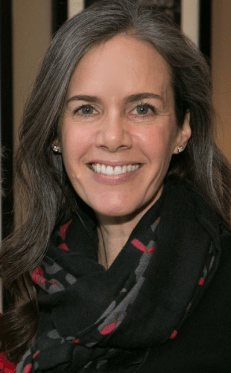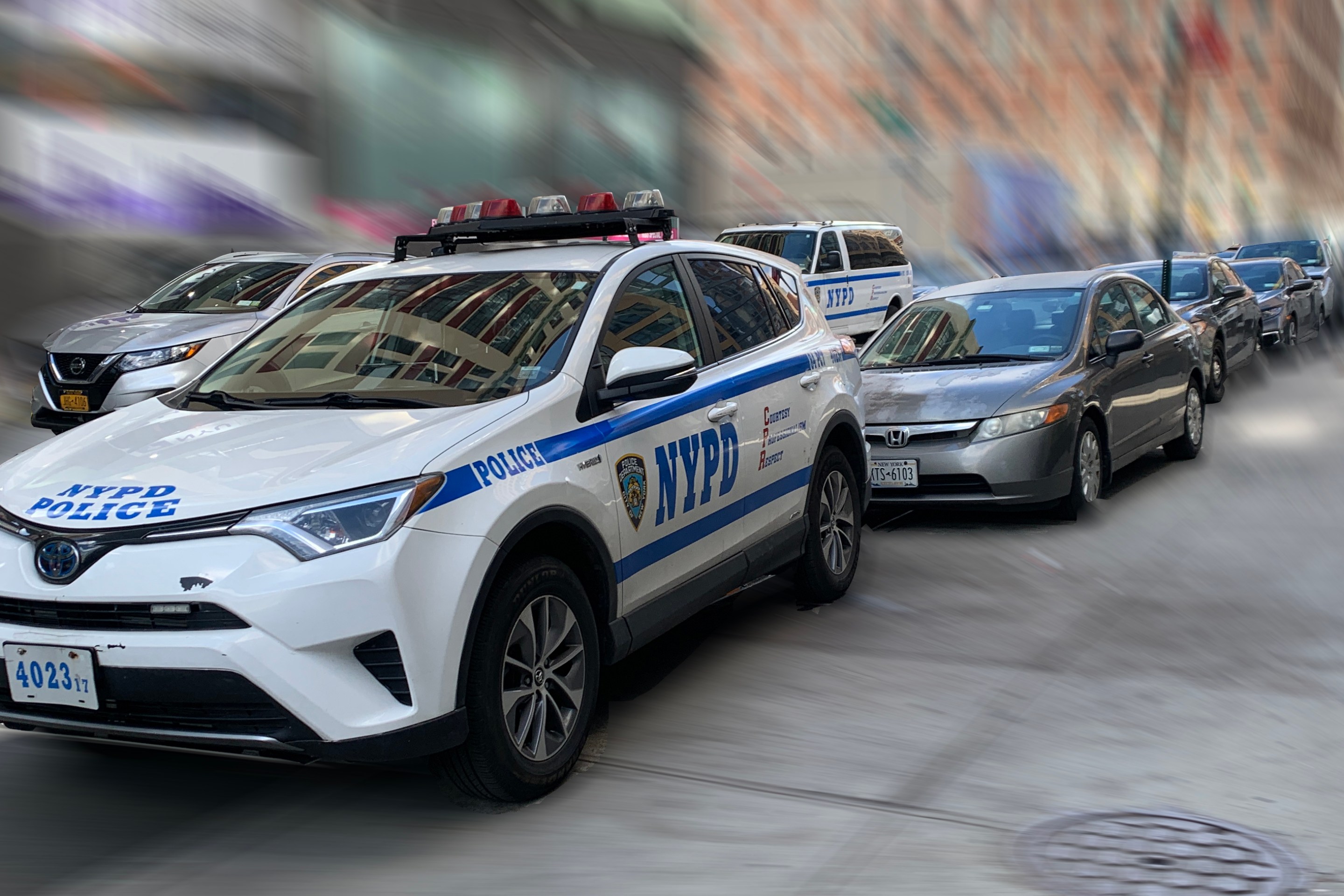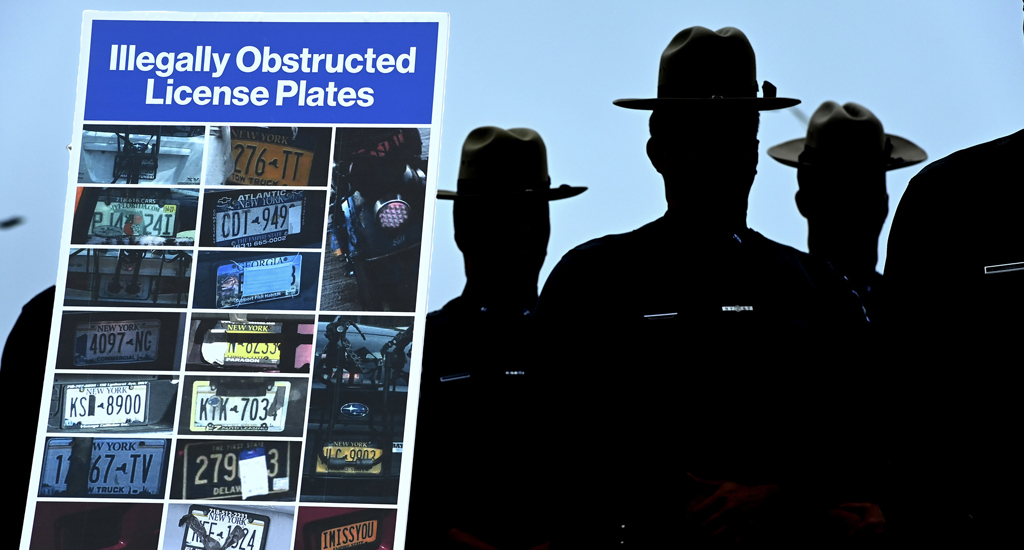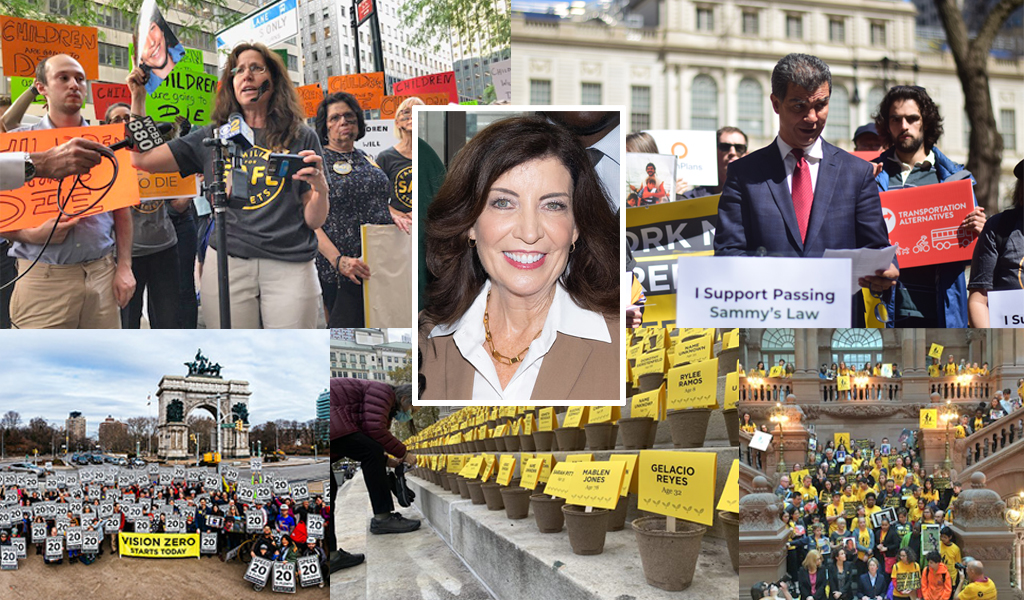Op-Ed: Saving New York After COVID-19
12:01 AM EDT on April 20, 2020
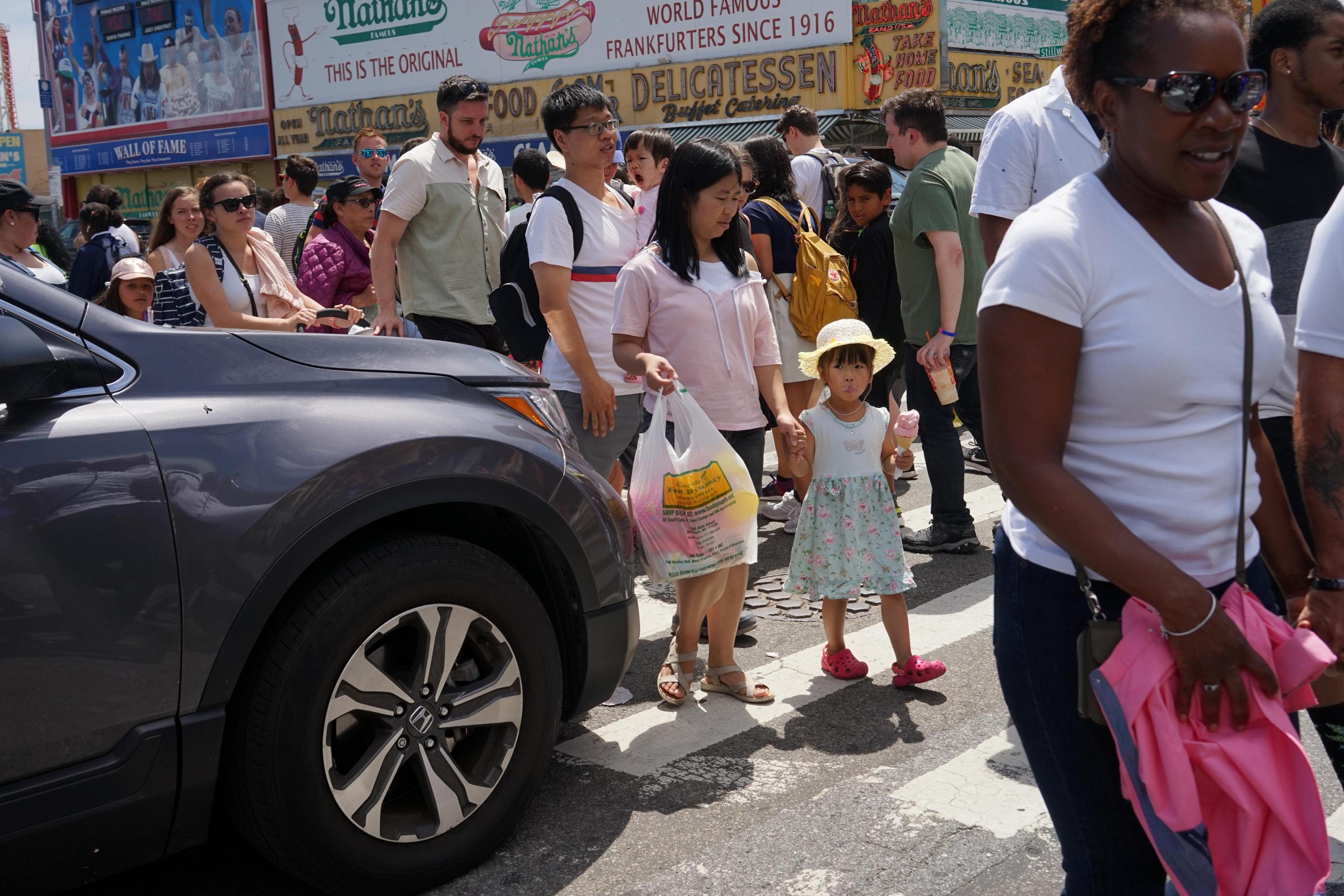
Images like this remind us of how important crossing guards are. Photo: Bess Adler
Mayor de Blasio said he might soon start planning the city's post-COVID-19 future. But Streetopia UWS Director Lisa Orman, an advocate for human-centered cities, is already strategizing. This is the first installment of a two-part series.
COVID-19 is ravaging New York: thousands are dead; hundreds of thousands are out of work; city and state budgets are in collapse. But if we act smartly now, the city and the state can emerge from the crisis stronger. If we make the right choices, we can rebuild our city and neighborhoods to be more environmentally sustainable, fiscally sound, equitable — and resilient in the face of future threats.
The livable-streets movement has long advocated a set of policies that places the health and welfare of people over the primacy of machines — in particular, the automobile. In this age of pandemic, those policies make more sense than ever. Here are a few ways to start saving New York:
Reduce cars and vehicle-mile traveled
As the virus has so graphically demonstrated, clean air and giving more space for people and less space for vehicles is a public-health and environmental-justice imperative.
The virus is claiming more lives in the poorest parts of the city, where the air is dirtiest. The crowding in many neighborhoods has enabled the deadly pathogen to spread more efficiently. Having fewer vehicles on the roads saved the lives of New Yorkers who would have been killed by reckless drivers.
“Concentrated poverty, economic inequality, and racial and economic segregation are not only morally unjust — they also provide fertile ground for pandemics to take root and spread.” Let’s rebuild differently, based on different values. https://t.co/AsjqvGKYlP
— Streetopia Upper West Side (@StreetopiaUWS) April 1, 2020
With fewer cars on the streets, our air is cleaner, noise pollution has plummeted and the anxiety that comes from constantly being intimidated by car drivers has decreased. Obviously, as commerce picks up, some vehicles (delivery trucks, school buses) will return to our streets, but we must not — we will not! — go back to the crowded, car-choked, status quo that helped kill so many New Yorkers.
In this, Mayor de Blasio could lead by example by reducing the city fleet in a much smarter and thorough way than he has proposed. The mayor, who grew the more than 25,000-vehicle city fleet 19 percent during his tenure, before pledging to reduce it by 4 percent last year, must place an immediate moratorium on purchasing any new city vehicles.
Each agency also should be tasked with reducing its fleet by a set percent — including by eliminating almost all of the 3,050 personal cars the city has doled out to workers like candy. (The mayor has promised to cut 500 by next year, and he's ahead of that tiny goal.)
And the city must mandate reductions not just in fuel consumption and greenhouse-gas emissions (as the mayor’s plan does), but also in drive-alone rates and vehicle-miles traveled. From July 2018 through June, 2019, city vehicles logged 187.3 million miles — 4.5 million more miles than the previous July-to-June period, an increase of 2.5 percent.
Right now, because of the health emergency, many of the city’s more than 330,000 employees are working from home. If, after the virus subsides, the city would allow them to continue to do so a day or two a week, imagine the reduction in VMTs.
A city of walkers and transit riders should not be managed by a government of drivers.
Here's the NYC skyline from my window in Woodside, #Queens.
— Laura Shepard (@LAShepard221) April 12, 2020
Left: Sunday, April 14, 2019, 9:13 a.m.
Right: Sunday, April 12, 2020, 9:13 a.m.
We don't want to go "back to normal." Let's move forward with a sustainable and just environment and economy. pic.twitter.com/dyVF15XvPC
Statewide, New York also could enact policies that required large employers to reduce VMTs and drive-alone rates. Seattle’s Commute Trip Reduction Model provides a model: Since 2007/2008, Seattle has reduced drive-alone commutes by 16 percent and commuter VMT by 23 percent, despite regional job growth.
New York also might try to pay for its roads by following the innovative example of Oregon, which taxes VMTs instead of gasoline. The logic? As cars get more fuel-efficient (or even electric), drivers end up paying less in gas taxes, which encourage more driving. But taxing drivers by the mile would reward less driving.
Raise revenue by charging for 'free' parking
“Free parking” is a huge drain on the city budget, costing us billions in lost productivity, air-quality damage, wear and tear on roads, and even lost lives, as Donald Shoup showed in his seminal book “The High Cost of Free Parking.”
In New York City, we give away 97 percent of our 3-to-4 million parking spots, and the only thing we require is that drivers move their car twice a week so we can clean up around them. This is a huge subsidy that must stop. In our COVID-devastated economy, we can no longer afford to give away such a valuable amenity. We could easily charge $2,000 per spot annually. That translates to at least $6 billion that we desperately need now.
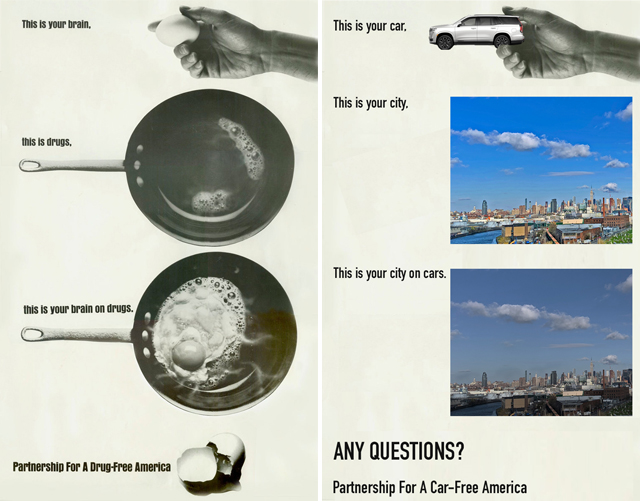
We would also reap environmental and health benefits. A Transportation Alternatives study of a 15-block area on the Upper West Side found that drivers on average cruised 1/3 of a mile each time they sought a parking spot, creating 366,000 VMTs and 325 tons of carbon-dioxide emissions annually. Distracted drivers, like those looking for a coveted parking spot, are also more likely to crash.
Many city car owners claim they need their cars — and some may believe they have valid reasons for driving. But we cannot ignore the fact that free parking is an incentive to own a car, rather than rely on other available means of transportation.
If our city shifted its priorities and stopped coddling drivers, those oh-so-necessary cars may suddenly stop being so important. It’s not about taking away a necessity from residents, but rather about not enabling a small minority of drivers and parkers. Parking should not be free in the city — anywhere or for anyone. It’s just that simple.
Drastically cut city-issued parking placards
Streetsblog has written volumes on how the proliferation of parking placards — city-issued permits that enable drivers to park illegally wherever they want — create unsafe conditions and take space from pedestrians, cyclists and even bus operators as drivers park willy-nilly on sidewalks, at bus stops and in front of fire hydrants. Council Speaker Corey Johnson shepherded through a long list of bills to target abusers, but not one has reduced the number of placards in circulation — now numbering about 150,000. The bills also didn’t call on any city agency to review placards.
What if we set a citywide target for 50,000 total and forced every placard holder to reapply? If city workers don’t need their cars in order to conduct their government business, the placard should not be reissued. (The majority of placard users drive to work and park their cars; they don’t need them for work.) It's pennywise and pound foolish to cut the budget for placard-abuse enforcement, as the mayor did earlier this month.
New York City will postpone the DOT's "Placard Abuse Enforcement Team," saving $400,000 in FY20 and $800,000 in FY21 and out years
— Anna Sanders (@AnnaESanders) April 16, 2020
At the same time, we should give city employees a free or reduced fare Metrocard and/or a Citi Bike membership. City employees — including our elected officials — should use transit, bike or walk like the rest of us.
Step up automated enforcement of traffic violations
Adding speed- and red-light cameras would reduce the workload (and — dare we wish? — the headcount) of the NYPD. Let’s expand the number of cameras to include all school zones — and operate them 24/7. People need to get accustomed to driving cautiously through our neighborhoods, and not just in front of schools, but in front of senior centers, hospitals, your house. Let law-breakers cry all they want over the “money grab," but if these scofflaws stop exceeding the speed limit by 11 miles per hour or more, they won’t get a ticket.
Similarly, let’s expand the camera enforcement for failure to yield, erratic driving, and double-parking.
After we’ve lost so many New Yorkers to a terrible disease, we must do everything we can to limit death and injury from traffic violence. Returning to a traffic-choked, "car is king" status quo is not an option.
Lisa Orman (@streetopiaUWS) is the director of Streetopia Upper West Side.
Read More:
Stay in touch
Sign up for our free newsletter
More from Streetsblog New York City
Tuesday’s Headlines: Valley of Political Death Edition
Did you see the new poll showing congestion pricing is really unpopular? Ignore it! Good times are coming. Plus other news in today's headlines.
Open Streets Groups Warn of Extra Red Tape to Run Events
Two weeks notice for hopscotch or a yoga class?
Monday’s Headlines: A Federal Case over Parking Edition
We're flicking our bicycle bell over a big scoop last week that no one picked up on...yet. Plus other news.
Hochul, Legislators Reach Toll Evasion Crackdown Deal
Higher fines for covering a plate and for not paying tolls are part of the budget deal inked on Saturday.
Behind the Scenes: How Gov. Hochul Got ‘Sammy’s Law’ Over the Finish Line
Opponents didn't want to put their name on a no vote for the life-saving measure.
